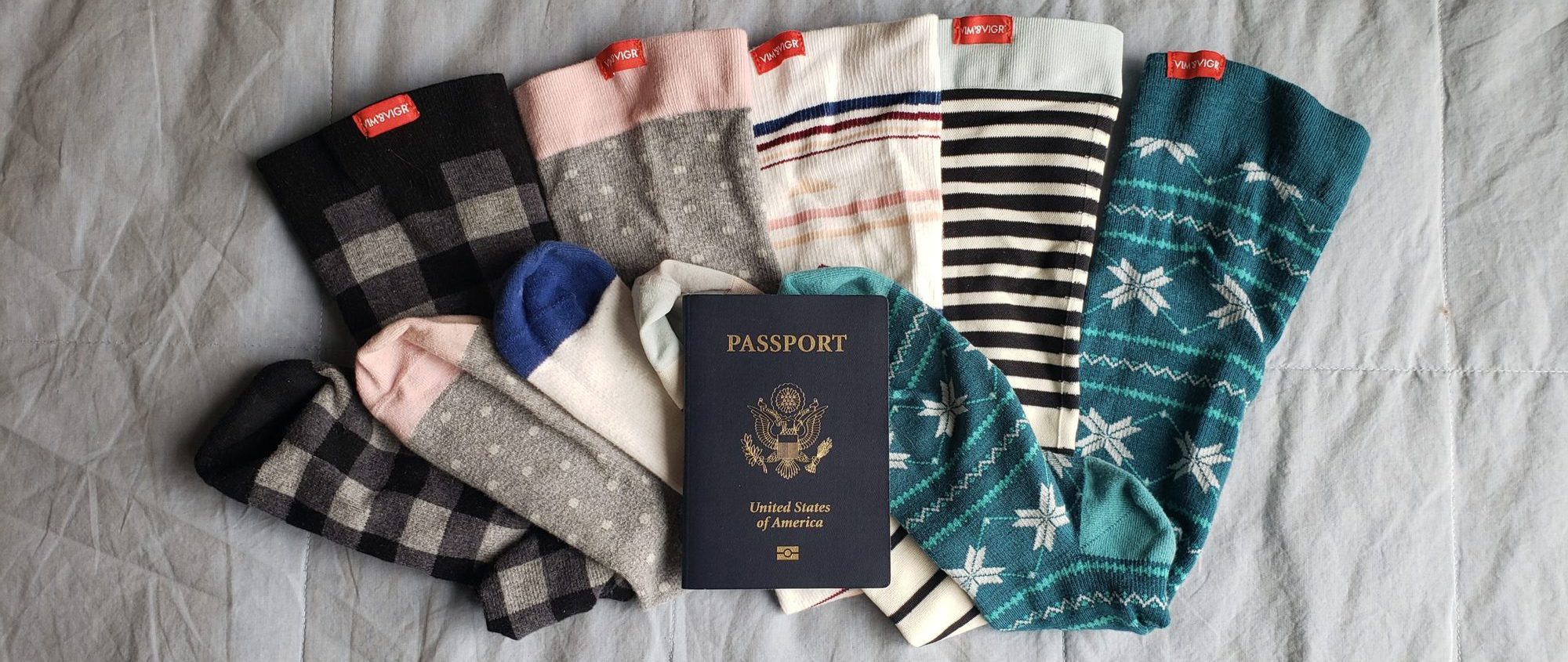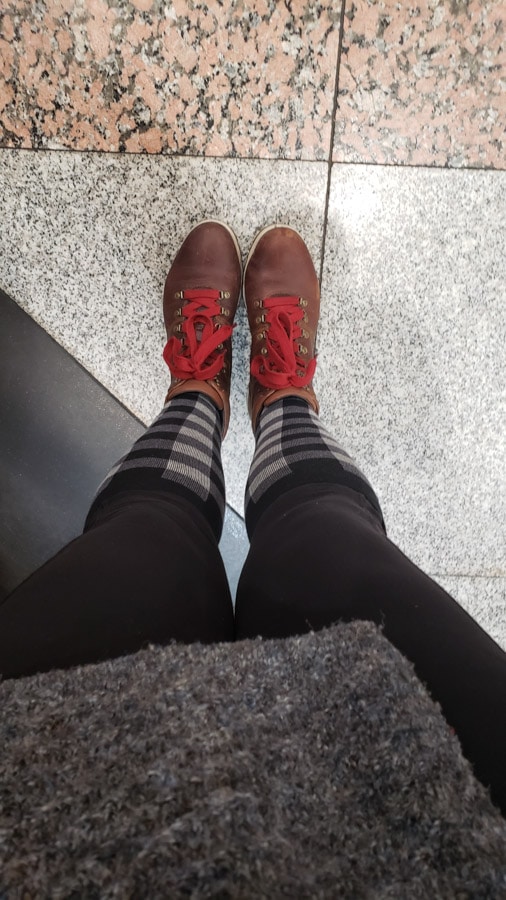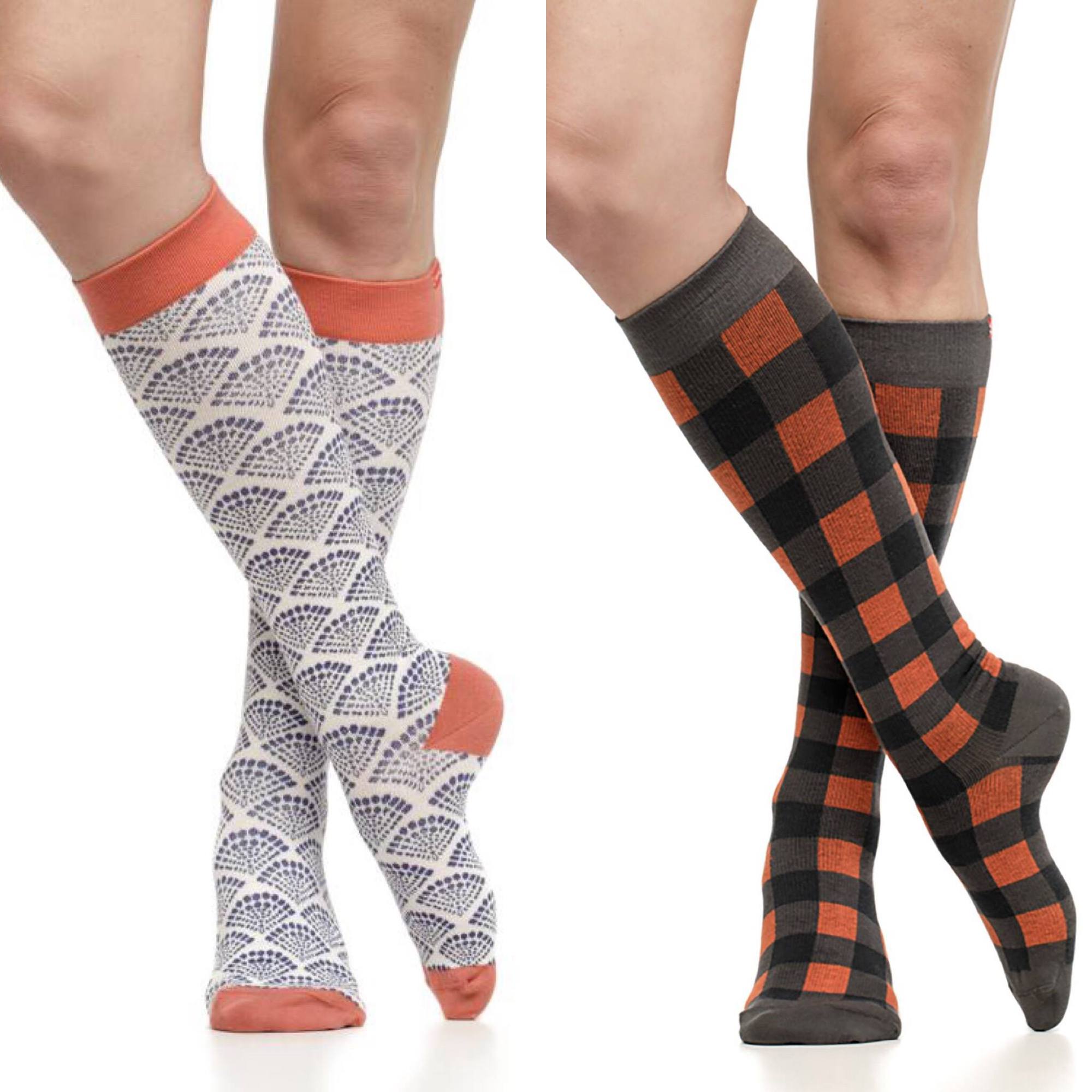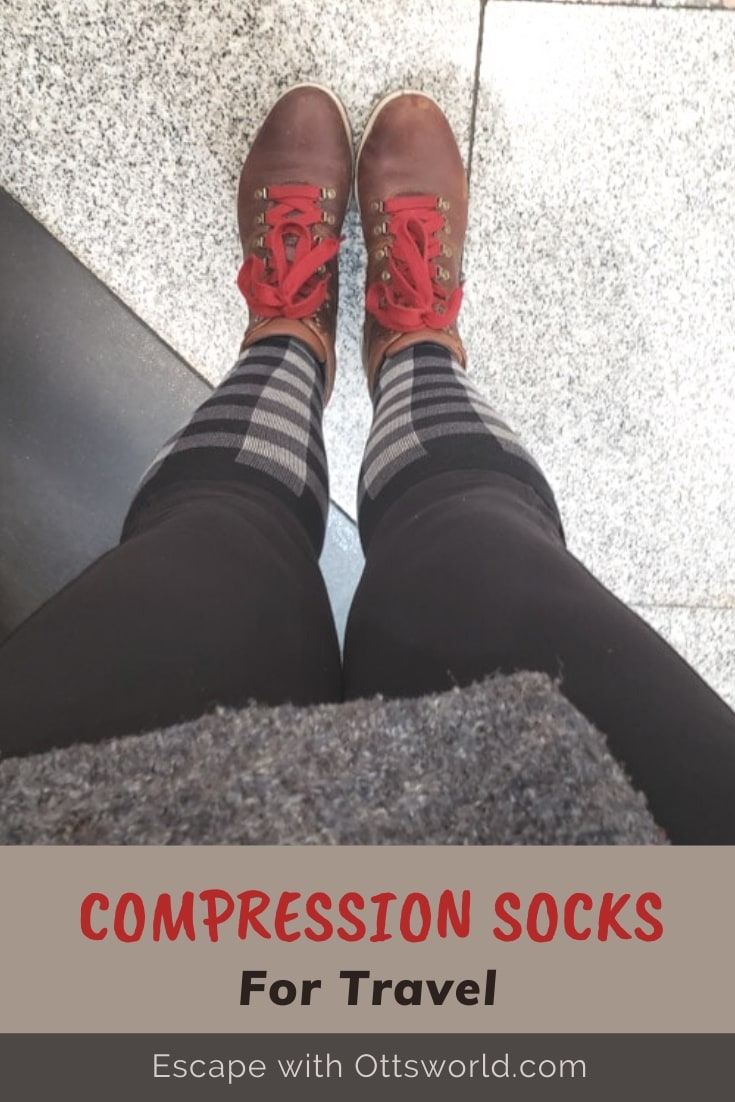Compression Socks for Travel: What, Why, and How
This article may contain affiliate links where I make a small commission for purchases you make from links that you click from this article. By purchasing through these links, you support me at no additional cost to you. Thanks for your support.
Travel nearly killed me in 2008. No, it wasn’t a close call driving in a foreign country which is how I always assumed I would get hurt traveling. Instead, it was my long-distance flight from the US to India that nearly killed me. No, it wasn’t turbulence, terrorism, or mechanical failure. It was all due to contracting blood clots while flying on a long-distance flight, turning into three pulmonary embolisms that ended up in my lungs.
I was lucky, I survived and caught it in time thanks to a persistent ER doctor in Denver. Most people don’t.
Read about my story of contracting blood clots while flying and how they were discovered
After that near-death experience, I have been educating myself and others on the dangers of blood clots (DVT) and long-distance flights. Since my job is about inspiring people to travel, I certainly don’t want people to be afraid of travel or flying! I’m often asked what you can do to protect yourself against blood clots from flying, and one of the first things I mention is
That day in the hospital, when I was diagnosed, as I was being discharged, my doctor told me to make sure I get up and walk around on the plane regularly when I fly, stay hydrated, and wear
Table of Contents
What are Compression Socks, and How Do They Work
You’ve probably heard of
They are kneesocks. It’s a
They can also improve the flow of the fluid(called lymph) that bathes the cells in the legs. Improving the flow of lymph can help reduce tissue swelling.
Think of it as the socks giving your veins a boost, pushing blood back to your heart, increasing circulation, and preventing clotting.
What Causes Blood Clots
Sitting for long periods of time can cause blood flow below the knees to decrease by 50%, significantly increasing the chance of blood clots.
I contracted my blood clots on a 13-hour flight from NYC to Delhi when I sat in the middle seat and didn’t get up and move around because I passed out asleep for about 5 hours.
The risk occurs when you are sitting for longer than 2 hours without getting up. That means if you are one of those lucky people who fly first class and get to lay down and sleep, you don’t really have to be as concerned about sleeping for more than a couple of hours at a time.
This means that really anyone traveling more than a couple of hours, whether by air, car, bus, or train, can be at risk for blood clots. I had a young friend contract clots on a long train ride where he didn’t move around.
Granted, normally, it’s not just about sitting for a couple of hours; you usually need to fall into one of these categories too:
- Older age (risk increases after age 40)
- Obesity (body mass index [BMI] greater than 30kg/m2)
- Recent surgery or injury (within 3 months)
- Use of estrogen-containing contraceptives (for example, birth control pills, rings, patches)
- Hormone replacement therapy (medical treatment in which hormones are given to reduce the effects of menopause)
- Pregnancy and the postpartum period (up to 3 months after childbirth)
- Previous blood clots or a family history of blood clots
- Active cancer or recent cancer treatment
- Limited mobility (for example, a leg cast)
- A catheter was placed in a large vein
- Varicose veins
I think more people than you think actually fall into these risk categories. Heck – just look around the plane and at least over half of the people are over 40 alone.
I unknowingly had increased risk because I was over 40 and I was on birth control pills. Not once had anyone mentioned to me that by being on birth control I increased my risk of clots, this was a complete surprise to me.
You also increase your risk of contracting blood clots while flying if you sit in a window seat. Yes…that window seat you tried so hard to get might not be worth it! A study by the American College of Chest Physicians (ACCP) suggests that long-distance travelers sitting in a window seat tend to have limited mobility, which is responsible for their increased risk of DVT.
Why You Should Wear Compression Socks When Traveling
Let’s talk numbers. About 2 to 5 out of every 10,000 people who take a flight longer than 6 to 8 hours develop deep vein thrombosis that causes symptoms (at the most 0.05%). That may not seem like a big risk, but if you can do something as simple as wearing
Recent studies show that airline passengers who wear
compression socks, as you tour around, help decrease lactic acid, prevent cramps, increase blood flow, increase oxygen delivery, and minimize muscle fatigue. Your tired legs basically recover faster!
Compression Socks For Flying
Look – I never thought DVT and pulmonary emboli would happen to me. I’m young, and healthy, I have been traveling for 13 years pretty much non-stop – I didn’t think I was at risk. However, it can happen to anyone. In fact, once I told my story to people, I couldn’t believe how many other people I knew had similar scares or family/friends who had actually passed away due to a pulmonary embolism/DVT caused by a trip. Wearing
Ok – you convinced me, so how do I wear compression socks for flying?
I have a new travel ritual when it comes to flying days. I picked out a cute pair of
According to the Institute for Quality and Efficiency in Health Care, “If you want to lower your risk by wearing
When I get through security, I fill up my water bottle so that I can stay hydrated throughout the flight. Plus, this is one time you want to get up and pee a lot because it makes you get up and move around!
Once I’m on the plane in my aisle seat (I never fly window seat any longer), I set my timer on my phone for 2 hours.
Every two hours, I get up and walk around. I use the opportunity to go to the bathroom, and I also normally march in place, stretch out my legs and back, and then after a good 5 to 10 minutes on my feet again, I’ll return to my seat and set the timer again.
Even if it’s an overnight flight, I still get up every 2 hours.
How long can you wear the socks for?
There are no real rules for how long you can wear them. However, you should take them off at night when you are sleeping (unless you are on an overnight flight!). The only real drawbacks to them are that sometimes they are challenging to get on (here are some tips on how to put them on), and I sometimes get a bit itchy or skin irritation if I wear them for a really long trip.
What Level of Compression Socks Should You Use?
If you’ve ever shopped for
Generally, graduated
15 to 20 mmHg – this is the day-to-day stuff – or for people who aren’t at any increased risk. These are great for most people for travel.
20-30 mmHg – this is medical-grade
Best Compression Socks for Flying
Now, since you are hopefully on board for why you should wear
Vim&Vigr Compression Products
I accidentally got to know Vim&Vigr at an outdoor gear conference I was attending. I saw they offered
I stopped and started talking to the women at the booth. And I told them my story of DVT while flying. They sent me off with a pair to try out on my next trip. After that, I was hooked.
Unlike many brands making
Different sizes for calves – not all calves are the same…right? And when you are talking about
Various materials for different weather – Vim&Vigr offer various fabrics in their cute socks.
Sleeves and Tights – They have more than just socks! You can get
Their Company Philosophy – The other thing that impressed me about Vim&Vigr is the founder, Michelle Huie. I always love to support female-owned companies. Michelle worked in the healthcare industry for over 14 years before she decided to start making
They have really impressed me during the pandemic as they decided to start a ‘Buy one, Give one’ offer. Buy a pair of socks, and they will give one to a healthcare professional!
“Right now, there are doctors, nurses, and other healthcare professionals working around the clock to treat an influx of patients. These brave men and women are risking their health and well-being to care for others. We have the opportunity to help.
In the last month, they have given away $105,012 of
Use My Vim&Vigr Discount for Compression Socks!
Ottsworld Discount – I actually love Vim&Vigr so much that I am an ambassador for them. That means that you can use my reader discount code OTT15 for 15% off orders on their website! It expires 12/31/20.
Check out their styles at VimVigr.com.
Compression socks are great for faster muscle recovery and to fight blood clots on long flights or long road trips.
PLUS - use discount code OTT15 for 15% off orders!
Other Compression Socks I Have Used
I’ve used other
Sockwell from Amazon
Go2 Compression Socks
Take the risk out of your next flight or trip and be sure to try out
PIN IT FOR LATER!
Disclosure:
This post contains some affiliate links. If you choose to purchase items through these links, I will earn a small commission at no extra cost to you. These commissions help reduce the costs of running this site
























Thank you for sharing this. Are these socks are available to buy online?
Yes the are. There is a link box at the bottom with a button that says ‘Buy’ 🙂
Wow Sherry, that’s quite an awful experience but glad you came out of it ok. I’ve actually never considered compression socks cause I travel in compression exercise tights so I think that’s been working for me and I also unfortunately have a weak bladder so toilet breaks are frequent. Thanks for sharing your insights I definitely will recommend this going forward.